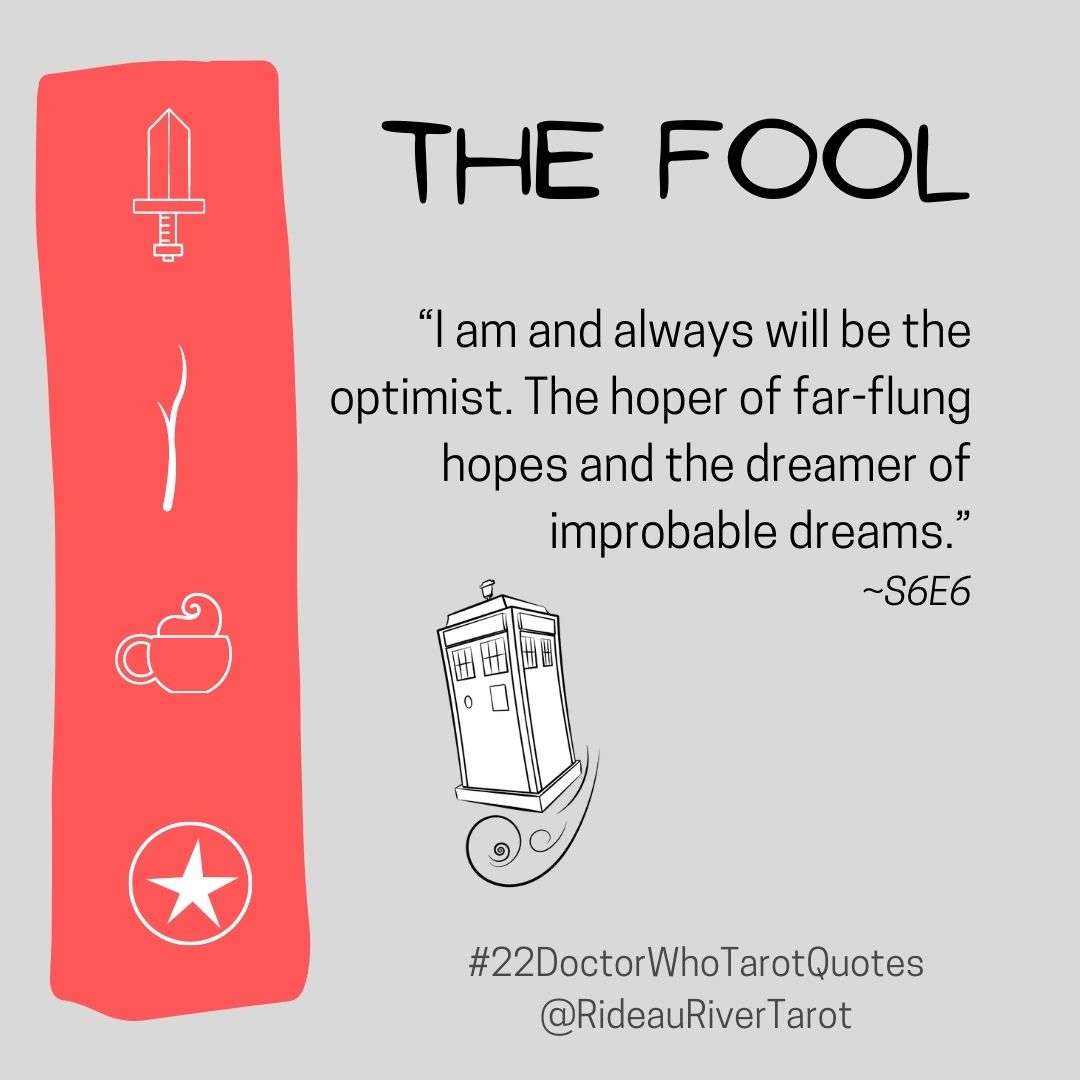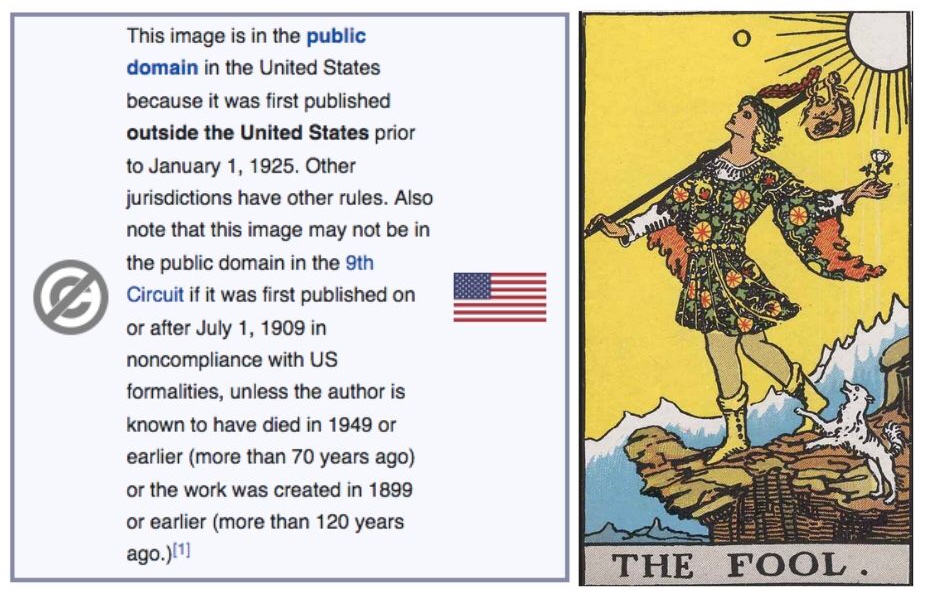I think that most people think of fortune telling when they think of tarot cards – they equate it with using a crystal ball to predict the future. Heck, this is the way I thought of the tarot for years. While a lot of people do use tarot for divination, it’s really limiting to think of it only in those terms. In fact, I use tarot cards every single day but I don’t use them for predictions at all.
So what else can you do with tarot cards? Here’s five ways to use tarot cards that are not fortune-telling or divination.
1. As a prompt for storytelling.
I recently listened to a podcast about how to use tarot as a writer’s tool, and I was fascinated. You can use tarot to look into a character’s motivations, or to discern their personality. You can use tarot to help create random plot twists. You can use tarot to generate character sketches for minor characters, or to create origin stories for your characters. Or just pull a card when asking yourself, “What happens next?”
2. To seek daily mindfulness
This is my favourite way to use tarot. I try to pull a card each day and ask myself what that card’s energy means for my day. Sometimes I do it looking ahead, but often I will pull it at the end of the day, asking what lessons were brought to me in this day.
This serves two purposes. First, it was terrific when I was trying to learn the card meanings in context of day to day life. Tarot cards show the panorama of human experience, and it’s interesting to see the themes and archetypes at play in our universal experience, and how we manifest the energy of the four suits in our everyday lives.
But more interestingly, it has caused me to pause and really *think* about what the day held. Was it a good day? Why? What went well and what didn’t go so well? Were there lessons to be learned? If you’re feeling extra keen, try journaling your card and what you learned. Are there patterns you can see over time? Are they positive or are they highlighting something that needs attention?
3. To amplify the voice of your inner wisdom
Sometimes the tarot cards are like a trusted friend, one who listens to your concerns and has the perspective and objectivity to point out what you may be missing. Guess what? That trusted friend can be your own inner wisdom, and sometimes hearing it echoed back in the cards is what we need to shine a little light on our blind spots and pull the truth out of the shadows where we’ve been trying to hide it.
Let’s say you’re trying to make a decision between two options: applying for a promotion versus staying with your current job. Lay out three cards: one for the benefits of applying for the promotion, one of the benefits of staying with the current job, and one for guidance on which one to choose. Reading the cards will help clarify your own feelings and intents about each option. Please note that I am absolutely not recommending that you draw cards to make the choice for you. The cards are a tool for insight, not something you should use to absolve yourself of responsibility for your actions. The cards are not the boss of you, YOU are the boss of you.
4. To help set your intentions and your goals
I first came across the idea of intentionally selecting tarot cards face up in a podcast featuring Mary K Greer. (Yes, I’ve been listening to a lot of podcasts these days!) I love the idea of replacing the element of random card selection with intention. What do you need in your life right now? What energy do you need to bring into your life? Let’s say you’re thinking about your career.
Pull all the Pentacles cards from your deck and lay them face up in front of you. (Pentacles are the suit of our worldly material concerns – job, finances, home.) Scan the cards. Which one speaks to you? Maybe it’s the Eight of Pentacles, which shows an apprentice hard at work on their craft. Study the card. Look at the symbols, the colours. What draws you? What insight does the card offer. Is there anything you’ve never noticed before? Why is that card interesting to you right now? Do you relate to the careful diligence of applying your skill? Or is it time for you to add a new skill to your toolbox? Are you doing things in your life that will help you evolve into a hardworking, trustworthy individual who is a master of their skills? What can you do to take the first steps on that journey? Then identify any obstacles in your way. How can you address or overcome those obstacles? This is a great exercise, and you can build a great mind map just drawing on your own inspiration taken from the elements of a single card.
5. To generate random encounters in Dungeons and Dragons
Okay, I will admit, this one is niche. You might not be a Dungeon Master looking for inspiration on how to create interesting NPCs or random encounters in the fantasy world you are building, but I think it’s an amazing (and close to my D&D loving heart) example of some of the weird and wonderful ways that tarot can be used outside of divination. I came across this post on Reddit where the author has explained how they use tarot to generate interesting D&D encounters. They draw a card for each of these elements: the goal that the players are trying to reach, the obstacle they face, the hook that draws them, the setting they’re in, the non-player characters who might also be present, and the villain of the encounter. It’s like creativity-in-a-box, and you can see the obvious parallels to my earlier point about storytelling. It also reminds us that in its origins, tarot was simply a card game, and sometimes it would do us well to remember the more lighthearted side of the cards.
Heck, if you’re looking for a less esoteric way to play with your tarot cards, how about a simple game of War or even Go Fish? After all, tarot cards were originally simply a card game not unlike Hearts or Euchre.
The message here is that using tarot cards for fortune telling is really just a tiny bit of the spectrum of possible ways you can use them. You can use them for inspiration, for introspection, for creativity, for play. The only limit is your own imagination. And if you happen to be someone who thinks they can predict the future too, more power to you!
What do you think? Have you heard of other wild and wonderful ways to bring the tarot cards into your everyday life?





